Have you ever wondered how websites make themselves more findable and accessible?
That’s because they’re SEO-friendly.
SEO-Friendly URLs make web addresses easy to read and understand, not just for us but also for search engines.
Creating SEO-friendly URLs isn’t just about technical finesse; it’s about enhancing user experience, streamlining navigation, and communicating with search engines in a language they appreciate.
In this post, we’ll discuss everything about SEO-friendly URLs and help you create them. So, without any further ado, let’s get started.
1 What Are SEO-Friendly URLs?
SEO-friendly URLs contribute significantly to a positive user experience, making it simpler for both search engines and users to navigate the web and discover valuable content.
For instance, instead of a generic URL like yourwebsite.com/page?id=123, an SEO-friendly alternative would be yourwebsite.com/seo-friendly-urls, clearly indicating the page’s content.
Here’s an example of an SEO-friendly URL from our blog.
2 Importance of SEO-Friendly URL Structures
Here are key reasons why SEO-friendly URLs are essential:
Enhanced User Experience
SEO-friendly URLs contribute to an amazing user experience by providing clear and easily understandable web addresses.
For instance, compare the user experience of yoursite.com/product/123 to yoursite.com/p?=id123. The former, with a descriptive structure, helps audiences anticipate the content they will find, leading to increased user satisfaction and reduced bounce rates.
Improved Click-Through Rates
Optimized URLs often include relevant keywords, aligning them with audiences’ search queries. Consider audiences searching for “best digital cameras.”
A URL like yoursite.com/best-digital-cameras is more likely to attract clicks than a generic URL containing alphanumeric characters. This alignment increases click-through rates and boosts the site’s overall visibility.
Efficient Indexing by Search Engines
Well-structured URLs make it easier for search engine crawlers to analyze and index a website’s pages. Compare the indexing efficiency of yoursite.com/category/page to a dynamic URL with parameters. The former, with a clear structure, helps search engines understand the content and rank it appropriately in search results.
Increased Backlink Opportunities
Clear and user-friendly URLs are more likely to attract backlinks from other websites. Consider a scenario where an external site wants to reference a specific page. A concise, descriptive URL like yoursite.com/seo-best-practices is more shareable and appealing for other sites to link back to, contributing to the website’s authority.
3 Best Practices for SEO-Friendly URLs
Now that you have an idea of SEO-friendly URLs, we’ll discuss the best practices to create them.
3.1 Maintain Consistency in URLs
Consistency involves maintaining a uniform website format, ensuring URLs share a consistent and predictable pattern.
It enhances user experience by establishing a logical hierarchy and organization of content.
When audiences come across a consistent URL pattern, they can predict the structure of other URLs within the site, making navigation more easy.
From a search engine perspective, a consistent URL structure simplifies the indexing process, allowing search engine crawlers to understand and categorize the website’s content efficiently.
For instance, consider a website about digital marketing with inconsistent URL structures:
yoursite.com/marketing-tips/seo-tips, yoursite.com/blog-page/123
Now, compare it to a website with a consistent URL structure:
yoursite.com/marketing-tips/seo-tips, yoursite.com/marketing-tips/content-strategy
In the above consistent URL example, audiences can easily predict that the next URL under marketing-tips will likely relate to another aspect of marketing.
3.2 Create Descriptive and Meaningful URLs
Descriptive and meaningful URLs are an important aspect of creating SEO-friendly web addresses that provide users and search engines with clear insights into the content of a webpage.
Instead of using generic or cryptic combinations of characters, these URLs incorporate words that accurately describe the nature of the page, contributing to a better understanding of the content.
Additionally, search engines favor descriptive URLs because they provide contextual information, helping algorithms understand the content and improving the web page’s chances of ranking for relevant search queries.
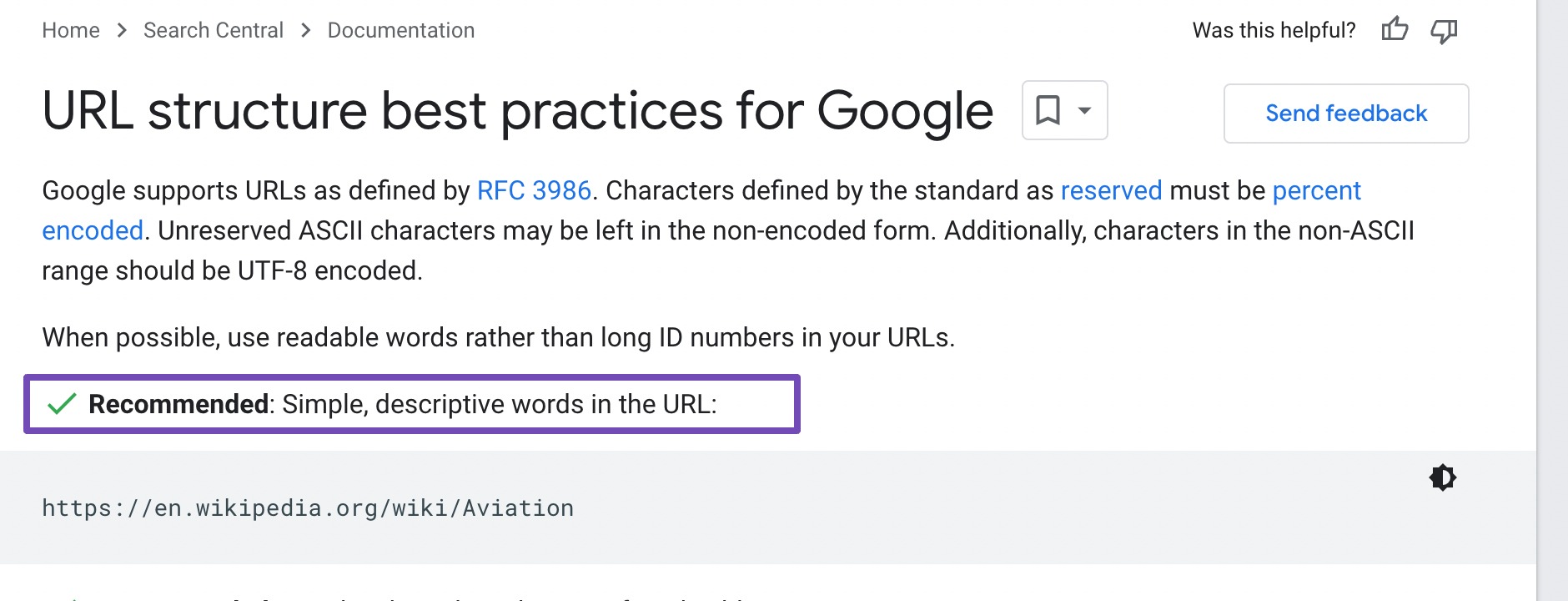
Using a descriptive URL structure like yoursite.com/content-creation-tips instead of yoursite.com/page123 communicates that the page contains tips for creating content.
3.3 Include Keywords
Incorporating keywords into the URL structure signals to search engines what the content is about, improving the relevance of the webpage for specific search queries.
When your audience comes across a URL that includes relevant keywords, it clearly indicates the content they can expect on the page, enhancing their overall browsing experience.
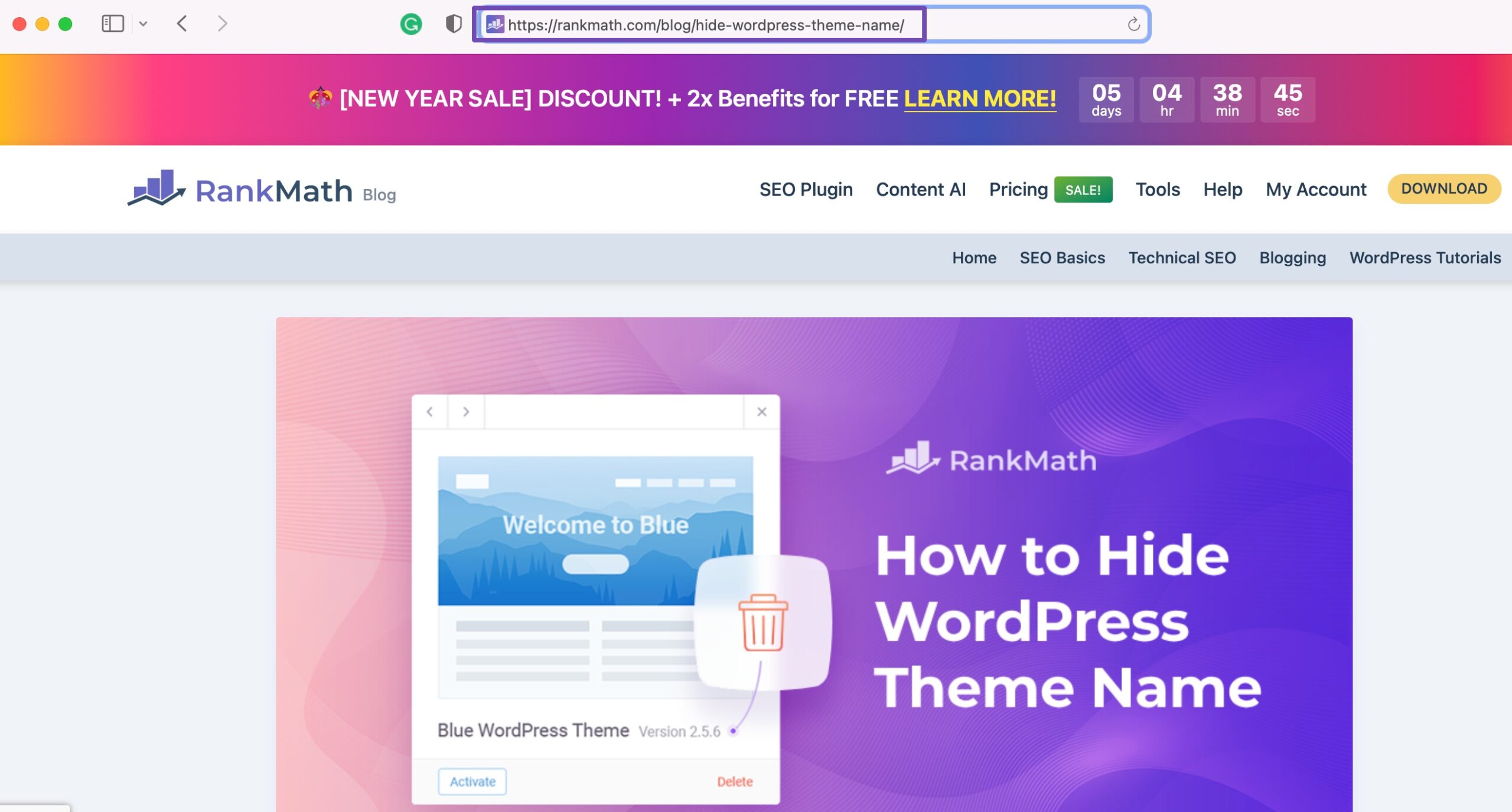
Rank Math checks if the URLs contain the keyword. This test is only performed for the primary focus keyword.
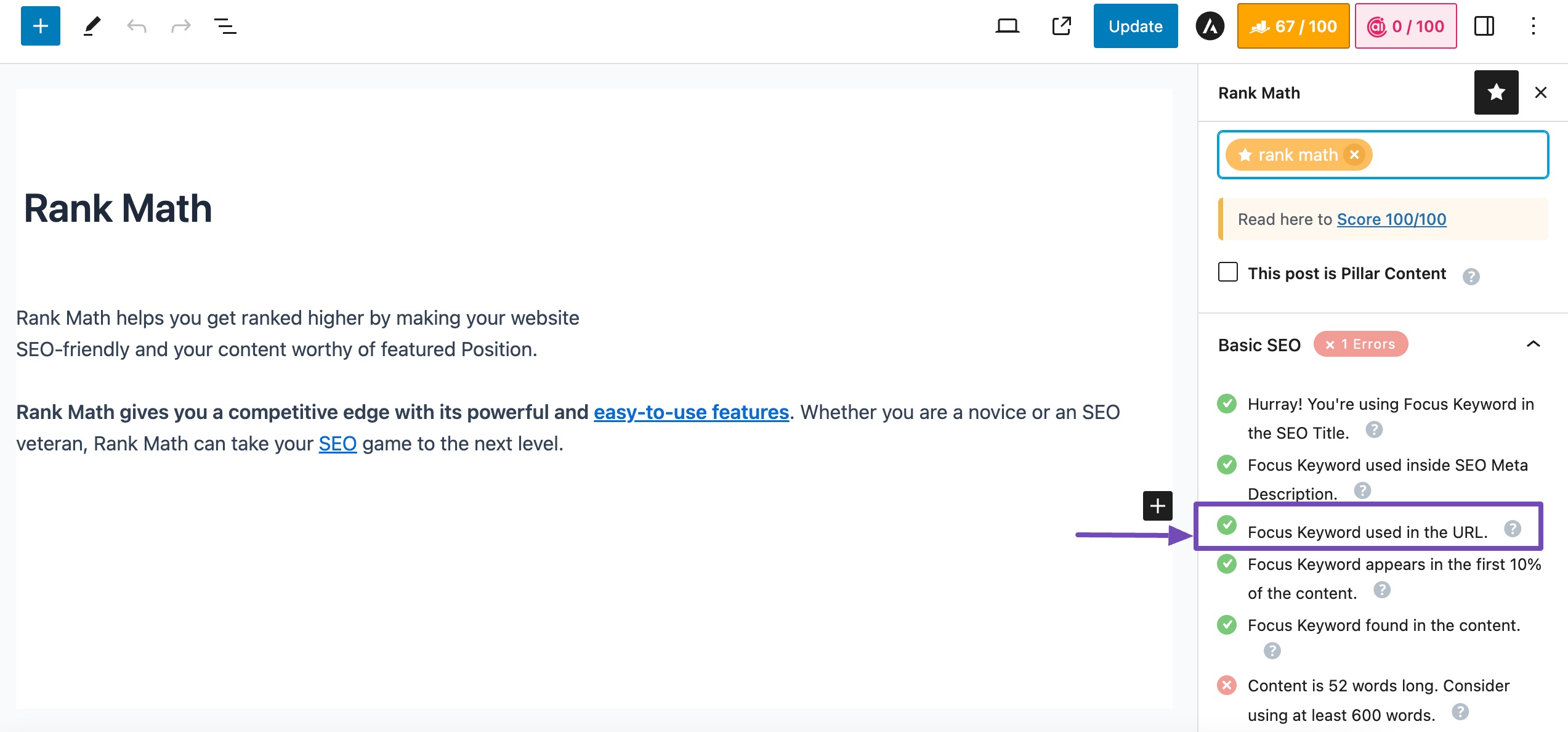
Refer to our dedicated tutorial on keyword research to find the right keywords for your website.
3.4 Use Hyphens in URLs
To ensure that your website has SEO-friendly URL structures, it’s essential to incorporate hyphens for effective word separation within the URL.
Firstly, hyphens act as visual cues, significantly improving the readability of URLs for both audiences and search engines. For instance, instead of opting for mywebsite.com/onpageseoguide, it is advisable to use mywebsite.com/on-page-seo-guide/.
Additionally, search engines interpret hyphens as separators, treating each word between them as a distinct entity. This helps in the identification and recognition of keywords within the URL.
Search engines tend to favor URLs that are clear, descriptive, and easily understandable, and hyphens contribute to achieving this clarity and readability.
In 2007, Matt Cutts advised that for new websites, it’s preferable to use hyphens in URLs. However, he emphasized that there’s no need to alter the URLs of existing or older sites.

3.5 Use Lowercase Letters in URLs
Using lowercase letters in URLs is essential for consistency and avoids potential issues related to case sensitivity.
Search engines treat uppercase and lowercase letters differently, and using consistent lowercase letters ensures uniformity in URLs across a website.
For instance, yourwebsite.com/Page and yourwebsite.com/page may be considered different URLs by search engines. To be on the safer side, it’s a good practice to use lowercase URLs.
3.6 Do Not Use Numbers in URLs
Removing numbers from URLs is a practice that contributes to cleaner and more user-friendly web addresses, enhancing both readability and search engine optimization.
Numeric characters in URLs can make them appear complex and less reader-friendly.
The URL becomes more readable by replacing numbers with descriptive words, making it easier for your audience to understand and remember.
For example, in our blog about “10 Best SEO practices”, instead of having a URL like rankmath.com/blog/top-10-best-seo-practices, which includes numbers, we opted for a URL like rankmath.com/blog/best-seo-practices/ without numbers to enhance the overall readability.
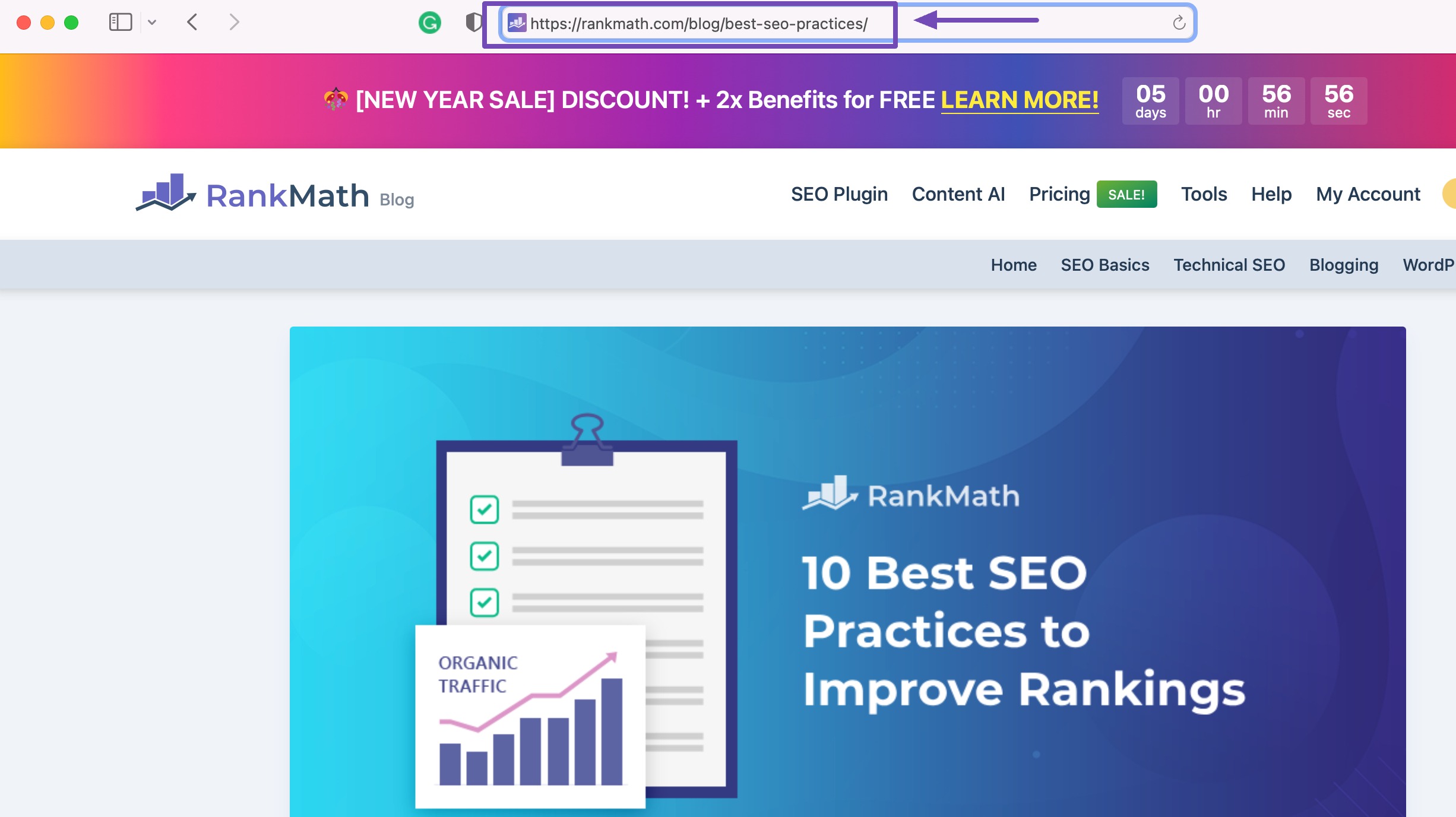
3.7 Remove Special Characters
Special characters, such as spaces, commas, semicolons, question marks, percent signs, etc., can lead to complications in URL interpretation and may not be uniformly supported across various web platforms.
By excluding special characters, URLs become cleaner, more readable, and less prone to encoding issues.
3.8 Use HTTPS
Using HTTPS in URLs is not only a security best practice but also a significant factor in SEO.
Google considers HTTPS as a ranking factor.
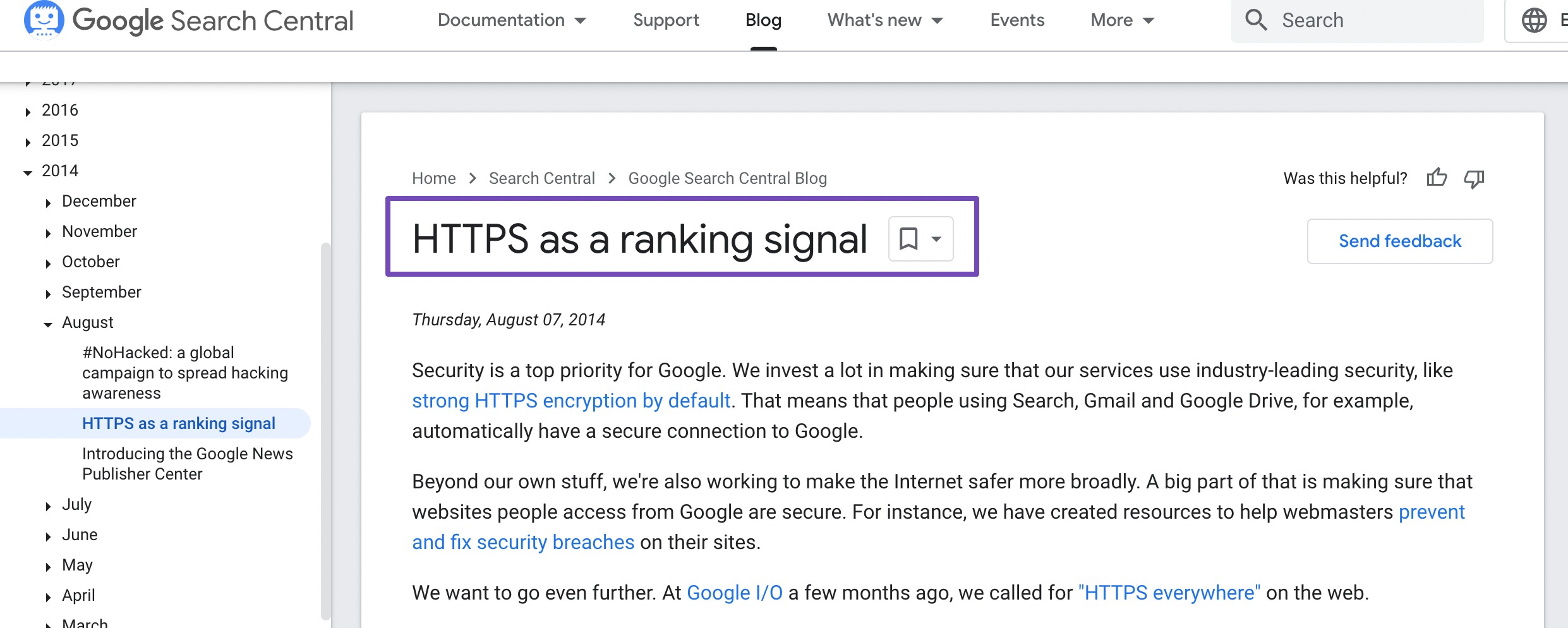
HTTPS enhances the trustworthiness of a website, positively impacting its search engine rankings and overall online reputation. So, if you’re still not using HTTPS, it’s worth a try!
3.9 Use Subdomains Only if Needed
Subdomains are prefixes to the main domain and can be useful for creating separate sections or functionalities. They’re typically used to separate different areas of a website according to their functionality.
According to Google, subdomains are treated no differently than any other content, and ranking a subdomain is no more difficult than ranking a subfolder.
Subdomains should be used only when there is a clear need for functional or organizational separation within a website. Using them unnecessarily can complicate site architecture and might affect your SEO efforts.
Refer to our dedicated tutorial on subdomains vs. subfolders to learn more about them.
3.10 Use Subfolders for Hierarchy
Using subfolders in URLs is a strategic approach to establishing a hierarchical structure within a website.
For example, consider a website that covers various topics and utilizes subfolders for categorization:
- Without Subfolders: yoursite.com/topic1
- With Subfolders: yoursite.com/category/topic1
In the second example, the use of subfolders introduces a categorical layer, providing a more structured and intuitive organization. This hierarchy helps the audience navigate through different website sections easily.
4 Conclusion
URL optimization is not a one-time task; it’s an ongoing process for maintaining a strong online presence. As search engine algorithms evolve and audience behaviors change, regularly revisiting and optimizing URLs becomes a necessity.
While investing excessive time in creating SEO-friendly URLs may not yield significant returns, adopting a logical approach and adhering to the best practices makes complete sense.
Several key practices stand out to create SEO-friendly URLs. Begin by conducting thorough keyword research and strategically integrating these keywords into the URL structure. Utilize hyphens to enhance readability and separate words, and consider the removal of numbers and special characters for cleaner, more user-friendly URLs.
So take the first step towards higher rankings and improved user experience and create SEO-friendly URLs.
If you like this post, let us know by Tweeting @rankmathseo.

